- Home
- Alec Waugh
The Sugar Islands Page 15
The Sugar Islands Read online
Page 15
1 In the original letter amusingly misspelt ‘accepted’.
An Historical Synopsis
from THE SUNLIT CARIBBEAN
When I first sailed for Martinique, I knew very little about the Caribbean. Before I had been there many days, I realized that it was impossible for me to understand its way of life until I had some knowledge of its history.
In 1947 the publishing house of Evans Brothers invited me to contribute to the Windows of the World series of travel books, a book on the Caribbean. It was a short book, addressed to ‘the tourist, the intending tourist, and those who are forced for this and the other reason to travel in their memory and imagination. It is written for those who are interested in the West Indies, but possess no detailed or specialized knowledge of them. It is hoped that it will “put them in the picture” It opens with the following historical synopsis.
Written in 1947
THANKS to the generosity of the Carnegie Trust, most of the islands are supplied with excellent reference libraries, and it is easy for the inquisitive tourist to provide himself with a working knowledge of the history and present conditions of the group.
It is a long and tangled story: a story of courage and cruelty, of treachery and broken faith and high renown; so tangled and so long a story that no composite history of the Caribbean has been attempted. But, as the editors of fiction magazines know well, the most complicated narrative, the most intricate succession of incidents and details can be resolved into a five-line synopsis, and the story of the West Indies is briefly this:
At the end of the fifteenth century Christopher Columbus, believing that the earth was round and in an attempt to find a western route to India, discovered a group of islands that, in the light of this belief, he christened the West Indies. In their attempt to exploit his discovery, subsequent European pioneers came into such conflict with the original inhabitants of the islands that within a very few years the Indians who had inhabited the northern islands and, a century or so later, the Caribs who had inhabited the eastern islands had been ‘liquidated’. In the meantime, sugar cane had been introduced and, in order to supply cheap labour for the plantations, a slave trade with the Guinea Coast was organized. There followed a period of very great prosperity, when the phrase ‘rich as a Creole’ was in daily use. Then ‘the conscience of mankind’ was roused. The slave trade was abolished. The slaves were liberated. Cane sugar slumped. The islands, instead of being an asset, became a liability, a distressed area. [A new phase has begun. Air travel has brought the Caribbean within easy reach of the winter vacationist and the Caribbean is enjoying an immense tourist boom.]
That is the story in synopsis—a synopsis that may be amplified into four instalments.
There is the first period, roughly covering the sixteenth century, which is almost exclusively a Spanish period. During this period the Spaniards, having been granted by papal dispensation all the discoveries of the New World west of a certain line, colonized Hispaniola—the island which has since been divided into Haiti and San Domingo—Cuba, Puerto Rico, and Jamaica, exterminated the Indians, introduced sugar cane from the Canaries, and initiated the slave trade.
The second period, covering the seventeenth century, saw the gradual breaking-down of the Spanish monopoly. The French and English were in a position to challenge the Spanish Navy. The Spaniards, moreover, who had made the mistake as political economists of confusing bullion with wealth, lost interest in the islands on finding that there was no gold and silver there and moved farther west to Peru and Mexico. During this period the English captured Jamaica, the French captured the western and most fertile part of Hispaniola and called it Haiti, and the French and English occupied and disputed between themselves the chain of islands that stretches southwards between Florida and Demerara, exterminating in the process their Carib population. This period, which is the period also of the buccaneers, ended at the start of the eighteenth century with Spain’s recognition of England’s and France’s conquests; the Treaty of Utrecht marking in 1713 the elimination of Spain as a monopolist on the Caribbean scene.
The third period, of the eighteenth century, saw the high-peak of West Indian prosperity. In its latter half there was much bitter fighting between the French and English. Some of the greatest and most decisive naval battles of all time were to be fought between Dominica and St. Lucia. Several of the islands were to change hands several times; cities were to be sacked and plantations burnt. But war was not total in those days. War was the concern of the professionals, of the politicians and the chiefs of staff. Byron made the grand tour during the Napoleonic Wars; no one reading Jane Austen’s novels would imagine that they were contemporaneous with Trafalgar and Waterloo, and, in spite of almost continuous war during the latter half of this period, there was no diminution in the general prosperity of the sugar islands. Actual statistics convey little; the value of sterling has changed so much; populations are so much greater. But the importance of these islands can be gauged adequately from the fact that, at the peace-making in 1763, England very nearly decided to retain Guadeloupe and return Canada to France as being of less account. It is indeed probable that during the Napoleonic Wars more British soldiers lost their lives in the West Indies than in Europe.
That third period ended or, rather, may be said to have begun to end with the French Revolution. By the time the Napoleonic Wars were over, the agitation against the slave trade had grown acute. The Spanish-American colonies were in revolt and the imperial policy both of France and England was turning southwards towards Africa and eastwards to the Levant and Orient. The red light was showing for the big plantations.
The liberation of the slaves ended the prosperity of the West Indies. The big landowners were compensated for the loss of their slaves, but most of the estates were mortgaged. The planters, instead of reinvesting their capital on the spot, returned to Europe, abandoning their estates to overseers who mismanaged them either through incompetence or on purpose so that they themselves might have an opportunity later of buying them at a bargain price. There were temporary recoveries and booms, but the descent was steady and grew sharper. Each time there was a slump, another group of estates was put upon the market, to be bought up by syndicates or split up among small proprietors. The large houses were left to crumble.
No new European colonists came out; one by one the colonists of purely European descent went home, and for those who remained the social line between those that were of pure European descent and those that had intermarried with Creoles of African extraction grew more and more difficult to draw. By the eighteen-forties the fourth period had begun; the period of decline, the period that has not yet ended.
The first and Spanish period is one of the least creditable in Europe’s history. The aborigines of the northern islands, His-paniola, Jamaica, Cuba, and Puerto Rico, bore as far as we can gather at this late day a strong resemblance to the Polynesians. They were of a clear brown complexion. They had straight black hair, broad faces, and flat noses; they altered the shape of their heads, depressing their scalps in childhood with a wooden frame, a procedure that so strengthened the skull that blows from a Spanish broadsword often broke the blade off at the hilt—a Spanish comment and complaint that provides a symptomatic testimony to Spanish treatment. By European standards they were not facially beautiful. But they had fine dark eyes and friendly smiles. They were tall, they moved gracefully, and every observer is agreed as to their attractiveness. Christopher Columbus wrote in his report to Ferdinand and Isabella: ‘So loveable, so tractable, so peaceable are these people that I swear to Your Majesties that there is not in the world a better nation nor a better land. They love their neighbours as themselves and their discourse is ever sweet and gentle and accompanied with a smile.’
Something of their dignity may be gathered from the speech of welcome made to Columbus by one of the chiefs in Cuba:
‘Whether you are divinities or mortal men, we know not. You have come into these countries with a force against
which, were we inclined to resist it, resistance would be folly: we are all therefore at your mercy. But if you are men subject to mortality like ourselves, you cannot be unapprised that after this life there is another, wherein a very different portion is allotted to good and bad men. If therefore you expect to die and believe with us that everyone is to be rewarded in a future state according to his conduct in the present, you will do no hurt to those who do no hurt to you.’
Everything that is to be read about these Indians reminds us of the Polynesians. They were unambitious, happy, and pleasure-loving. They supported themselves mainly upon maize. They had made no attempt to develop the resources of the soil, though they possessed some skill in the fashioning of domestic furniture, and made Columbus a present of some handsome ebony chairs. They would dance from dusk to dawn, often in large companies of many thousands. They amused themselves with a fibre football, which they kicked over their shoulders with the backs of their heels, maintaining it in the air for long periods. They welcomed the proud Spaniards as gods descended from the skies.
The Spaniards, however, suffered from the obtuseness of those who consider themselves a master race. They looked on the Indians as inferiors by whom they were owed, as a right, service and submission. They considered themselves, moreover, the subjects of a holy mission. They had crossed the ocean with great skill and courage, at considerable danger and discomfort, to spread the glory of Ferdinand and Isabella, to add to their Majesties’ possessions, to acquire wealth, to preach the gospel, and to convert the heathen. Their first investigations convinced them mistakenly that the islands generally and Hispaniola in particular were rich in gold. It seemed to them only proper that the Indians should work for them in the mines; and their fury was limitless when the Indians failed to recognize their role of servitors, refusing to work, escaping into the hills, often committing suicide. Nor could the Indians be made to appreciate the application to themselves of the foreign creed which approved such practices and in which the Spaniards diligently and patiently endeavoured to instruct them. When the Spaniards, in order to encourage the remainder to work and pray, roasted a few dozen over a slow fire, having gagged them first so that their screams should not disturb their officer’s siesta, the survivors grew resentful, and whenever a bunch of them happened upon a solitary Spaniard, slaughtered him. The Spaniards thereupon ordered that for every European killed, a hundred Indians should be burnt and disembowelled. It was all very much what was to happen in Europe four centuries later; only for the Indians there was no rescuing D-Day. But within twenty years the entire Indian population of Hispaniola had been wiped out.
How many Indians were liquidated during those early years it is impossible to assess. It has been said that there was originally in Hispaniola alone a population of two million. It is hard to believe that there were so many, and it is hard to see how this figure was arrived at, but there is much evidence to show that the islands were well-populated. Europe has often been criticized for the havoc that its traders wrought in the South Sea Islands, and there can be no question that the Polynesians, after receiving the benefits of Western civilization, deteriorated in health and morals. But everything that traders and missionaries did in the Pacific seems trivial in comparison with this extermination of an entire race. The only excuse that can be offered for the Spaniards is that, suffering under the delusion of being a master race, they did genuinely believe that salvation for the Indians could only lie through conversion to Christianity. It all happened, it must be remembered, in the days of the Inquisition. The medieval conscience was different from the twentieth-century conscience. One has to try to see historical events from the angle at which they appeared to contemporary observers.
A century later a similar fate was to befall, at the hands of the French and the English, the original Carib inhabitants of the Windward and Leeward Islands; but there the situation was somewhat different. In the first place, the islands were not nearly so densely populated. Barbados and Antigua are reported to have been uninhabited; and, secondly, the Caribs were a warlike race that was constantly raiding the northern islands and had possibly at an earlier period captured its own homesteads from the Indians. A few Carib settlements are still to be seen in Dominica. But the mild, dark-skinned, straight-haired creatures of today, who seem so out of place among the hardier Africans, are very different from the skilled warriors who resisted the foreign colonists. They were tall and brown, with shining, long black hair that they dressed daily with great care, and only cut short when they were in mourning. Like the Indians they altered the shape of their heads, but in an opposite manner—that is to say, by placing boards on the forehead and on the back of the head of the growing child, so that in adult life their heads had a box-like look. They scarred their cheeks with deep incisions, which they painted black. They also inscribed black and white circles round their eyes. They were beardless, removing all superfluous hair. Many of them perforated the dividing cartilage of their nostrils and inserted a fishbone or a piece of tortoiseshell. They made bangles for their arms and ankles out of the teeth of their dead enemies. Their children were taught the use of the bow and arrow by having their food suspended from trees out of reach, and having to go hungry till they could shoot it down. A boy before he was admitted to the rites of manhood underwent a cruel initiation ceremony. The Caribs were zenophobic and loved fighting. It was a long and bitter battle that they fought from their strongholds in the hills against the English and the French. In St. Vincent they were unsubdued at the time of the French Revolution.
This second period of West Indian history, during which the French and British divided the Windward and Leeward group, is in many ways the most romantic period of the four. It is this period that provides the material for all those serial stories of buried treasure and galleons stranded in the Sargasso Sea with which our boyhoods were entranced. To every young Englishman of spirit, the Spanish Main was a ‘finger beckoning to adventure’. There was glamour there and danger and high reward. The Spaniards had made the usual ‘Whitehall error’ of imagining that the lives of colonists living three thousand miles away and in the tropics can be ordered by minutes and memoranda drafted in city offices in a temperate climate. The bureaucrats of Cadiz insisted that their colonies should only trade with the mother country, and regarded as privateers the ships of all other nations. The colonists, on the other hand, were eager to welcome the Dutch, French, and English merchants who brought the goods on which their comforts and often their existences depended. It was in fact a ‘free for all’. Every Englishman, Frenchman, and Dutchman was likely, if he were captured by the Spaniards, to be tortured and put to death. The Spanish Main was not only filled with pirates, waiting to pounce upon Spanish convoys, but with honest merchantmen trading from Bristol and Brest and Amsterdam, as well as with peaceful emigrants seeking ‘the land of opportunity’. The Mayflower, for instance, had it been intercepted by the Spaniards, might have been regarded as a privateer. No Englishman knew what support he would receive from his own Government. He did not know if he would be treated as a patriot or a pirate. His position was that of an agent in the Secret Service, who is recompensed when he succeeds and unacknowledged when he fails. Drake was knighted. Raleigh was beheaded.
Nor had England, distracted as she was by civil war, any settled colonial policy. Vincent T. Harlow’s book on Christopher Codrington gives a significant picture of the difficulties that a serious English administrator had to face during the French Wars at the end of the seventeenth century, when the soldiers’ pay was six years in arrears and ‘colonial governors were required to enforce unpalatable laws while drawing inadequate salaries’. It is remarkable that under such conditions the foundations of the British Empire were laid, that Jamaica was captured from the Spaniards, and that Barbados, Antigua, Nevis, Montserrat, and half of St. Kitts were colonized. As Harlow has said, however, ‘a defective machine works tolerably well in the hands of skilful mechanics’, and in the Elizabethan and post-Elizabethan era many of
the finest Englishmen in the country’s history were seeking their fortune across the seas.
Vast fortunes were to be made during the next hundred years. It was only recently that Europeans had had an opportunity of enjoying warm, sweet drinks—until the seventeenth century they had subsisted on beer and wine—and there was an unlimited demand for sugar, for coffee, and for cocoa. The big landowners lived in state, attended by many slaves, entertaining in a Trimalchian manner.
The foundation of their prosperity was the slave trade. By the beginning of the eighteenth century, twenty thousand slaves a year were being transported to the British colonies in America and in the Caribbean. Bryan Edwards states that shortly before the American War of Independence the cities of Liverpool, London, Lancaster, and Bristol were operating in this trade alone a fleet of nearly two hundred vessels, with accommodation for fifty thousand slaves. Other countries were engaged as well, and British ships did not by any means trade only with British colonies. Forty factories, as they were called, were maintained on the coasts of Africa, of which seventeen were owned by the British and fifteen by the Dutch. It was estimated that seventy-four thousand slaves were shipped annually across the Atlantic. And it is important to remember that populations at that time were everywhere much smaller than they are today, the population of England and Wales being, in 1750, about six million!

 A Spy in the Family
A Spy in the Family Love in these Days
Love in these Days The Balliols
The Balliols Kept
Kept Fuel for the Flame
Fuel for the Flame Wheels within Wheels
Wheels within Wheels The Sugar Islands
The Sugar Islands No Truce with Time
No Truce with Time My Place in the Bazaar
My Place in the Bazaar Thirteen Such Years
Thirteen Such Years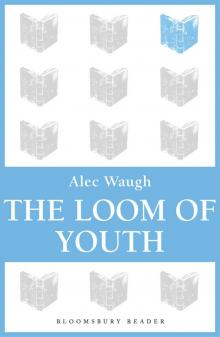 The Loom of Youth
The Loom of Youth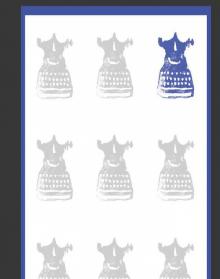 A Year to Remember
A Year to Remember A Family of Islands
A Family of Islands Brief Encounter
Brief Encounter Guy Renton
Guy Renton So Lovers Dream
So Lovers Dream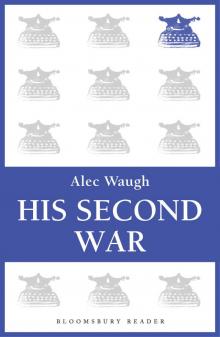 His Second War
His Second War My Brother Evelyn & Other Profiles
My Brother Evelyn & Other Profiles The Mule on the Minaret
The Mule on the Minaret Sir!' She Said
Sir!' She Said Nor Many Waters
Nor Many Waters The Fatal Gift
The Fatal Gift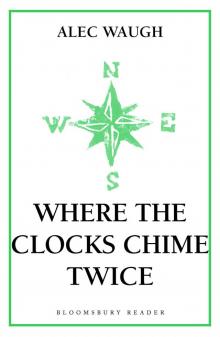 Where the Clocks Chime Twice
Where the Clocks Chime Twice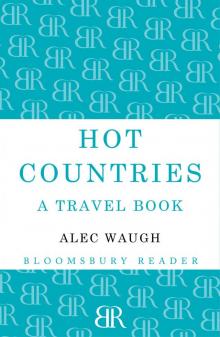 Hot Countries
Hot Countries Unclouded Summer
Unclouded Summer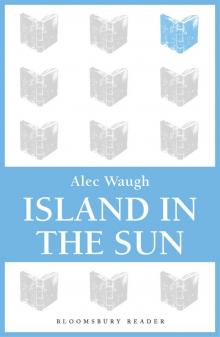 Island in the Sun
Island in the Sun